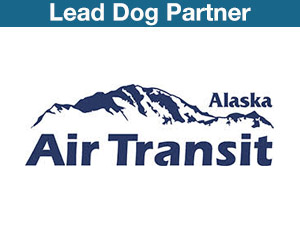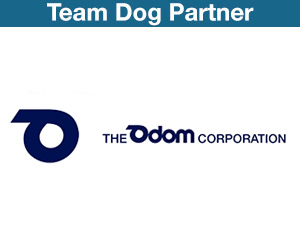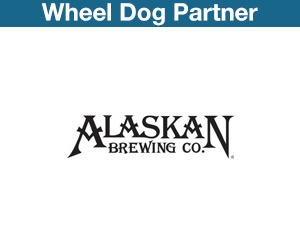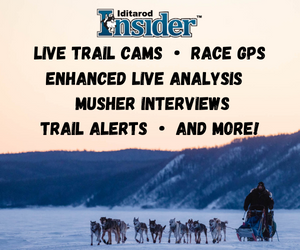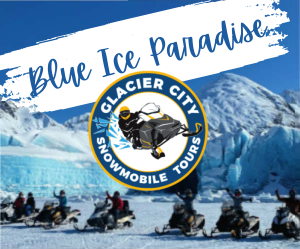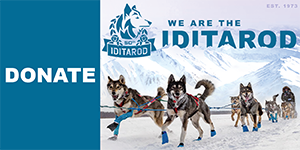2017 Iditarod on the Launch Pad
Joe Runyan
’89 Iditarod Champ
March 3, 2017 ANC
I have to admit it. I’m just an avid Iditarod tourist from New Mexico that packed every vestige of cold weather gear from my mushing days and can hardly wait for the mushers to pull the ice hook and let teams bolt out of the start chute on the Chena River in downtown Fairbanks on Monday March 6.
Yesterday, boarding the plane in Tucson in direction Seattle I noted passengers in shorts and T-shirts. In Seattle, casual desert wear changed to the more trendy sweater, windbreaker look of that urban center. Then, I arrived at gate 17 for the next flight to Anchorage and here a certain reality presented itself with air travelers lounged in chairs wearing puffy coats with HOODS that were making a fashion statement of reality. We are going to the Iditarod!
I sat next to a young cold weather US army specialist stationed at joint base Elmendorf/Richardson who had biceps bigger than my thighs and had a great talk about the arctic adventure and the Iditarod. A week before his group had parachuted into the Brooks Range on exercise. He waxed on about the endless Alaskan wilderness, the same draw bringing seventy mushers to Anchorage for Iditarod 2017.
The Fans
Early this morning, the buzz at Iditarod’s headquarter Lakefront Hotel restaurant was Iditarod. A conversation floated across the breakfast tables reflecting on the era of Susan Butcher, the four time champ of the 1980’s and pondered the chances of Aliy Zirkle, the perennial fan favorite and front runner of the pack who has yet to finish her first place in Nome. A phalanx of Iditarod volunteers with ID card necklaces sitting for coffee researched the weather for Fairbanks and noted that the extreme high pressure cold front may be weakening to 5 below rather than 20.
A breakfast order of reindeer sausage omelets arrived.
I joined a group of Iditarod media specialists for breakfast. These are great friends of mine who provide the technical expertise required to stage the Insider. Directed by the digital genius of Art Aldrich, these east coast guys do many productions around the world including golf events, for example, but always find time to schedule one of their favorite events— the Iditarod.
The service, overwhelmed by an influx of Iditarod tourists, was a little stodgy, like maple syrup stored in the freezer, and one of the guys remarked, “In New Jersey, they would have taken your money, cleaned the table, and you would be back in the parking lot in seven minutes.” I love these guys.
Paul Gebhardt
To the far end, veteran musher Paul Gebhardt and group looked out the massive windows of the Lakefront Hotel to Lake Hood, home of the world’s largest concentration of small aircraft. Paul is a legimate contender, and I mean legitimate (two second places and a third place in his career). A builder and log craftsman by trade, he is very innovative. Remembering that in some years he sensibly wears a snow machine helmet for safety and warmth, he remarked that he was again wearing the helmet with some modifications. Recovering from a severe case of the cold, he figures that the helmet will keep him out of the wind and protect him from the cold bite of the Yukon. This year’s trail will follow the river for about 600 miles. The axiom, invariably true, is that the wind blows down river in the winter to the Bering Sea, and brings all the air back up river in the summer. Guaranteed it will be wind and cold on the bed of the mighty YUKE.
For whatever reason, buried deep in his subconscious but now coming to his lips, Paul remarks that his voice is a little muffled while wearing the helmet. His table of supporters, including Iditarod veteran Scott Janssen, immediately seize on that thought and imagine a conference between his two lead dogs. Somebody imitates Paul giving the musher commands of Gee and Haw (go right, go left) whilst entombed in his helmet echo chamber. “What did Paul just say?.” says his veteran leader. “Yeah, I know, can you tell the difference between GEE and HAW?” says the other leader. Finally, after a few laughs, we recommend that Paul spend today working on his diction for the benefit of his leaders.
The Insider and Jeff King
Check out the interviews, conducted by Insider Greg Heister, Greg archived conversations last night at the MUSHER Banquet in downtown Anchorage. In particular, I liked the one with Jeff King. This four time champ has a chance of going head to head with Iditarod’s current champ Dallas Seavey. I thought he had a great team and strategy last year, unfortunately blown off track by an incident with a snow-machiner which caused him to drop four dogs from his team. As he points out, the team and his expertise are still intact for this years race. His comments about deep snow on the Yukon and the requred adjustments in strategy and schedule could be the theme of this year’s race. For example, King would like to draw a low starting position in the front of the pack and therefore avoid the chaos of passing teams in deep snow. Distances become meaningless when trail conditions grind the race to low gear and as a result rest run schedules must be altered.
The Yukon–my take
The first run on the Yukon is a whopper 120 mile stretch from the village of Tanana to Ruby. I lived and trapped on this section of the Yukon for thirteen years and have several observations. For one, the wind never stops blowing on the Yukon as it funnels every cold molecule in its vast domain down tributaries to its great bed, sometimes four or five miles wide. Furthermore, a trail rarely forms a very good base on the Yukon and therefore going is almost always tedious, the long stretches between the serpentine bends of the river seeming to take hours to accomplish.
While living and trapping on the Yukon one notices that the dogs, familiar with the route, begin to understand the topography of the river with their unique ability to see shades and contrast on a white background. My leaders, given to their own free will, would learn to follow the contours of snow on the wind blown hard pack and therefore avoid the soft interminable drifts of wind blown snow. At first, I wondered what the dogs were doing by shifting in big curves down the river rather than going in straight lines but after a while I remember thinking, “Wow, they are seeing that it is more efficient to travel around on the hard pack than wallowing throw the soft snow.”
That’s the way we used to travel on the Yukon almost fifty years ago. My old trapping partner, an Athabaskan Indian with unmatched wilderness skill, Freddie Jordan of Tanana, Alaska understood this very well. His single leader, Rocket, would scrutinize the wind molded morphology of the river and construct exquisitely efficient trails to our trap camp. However, that canine instinct will not be exercised.
Snow machines with wide tracks set the trail, going in straight lines, and only incidentally considering the condition of the snow. Literally, with the wind blowing, a trail could fill in within minutes. Certainly, a favorite past time of the Yukon trapper was to watch the wind and snow swirling around the runner tracks and obliterating the trail. Transfixed on the whirling patterns, a musher lost in thought, could make time move faster on along trip home on the Yukon. On the hard pack, a line scratched by the runners, could remain for the rest of the winter.
Therefore, as King indicates in his interview, the trail may be mostly dominated by sluggish going.
Two days ago, I did call Stan Zuray, the reality star of Yukon Men, in Tanana and also an Iditarod veteran. He had used the town cat to level a trail of rough ice for ten miles out of the village and reported that the unusually deep snow made it tough to establish a trail with any bottom, further confirming what King and the mushers suspect.
This will be a great story, the strength and durability of the husky on display. Hurry up Monday, I want the race to start.
.












